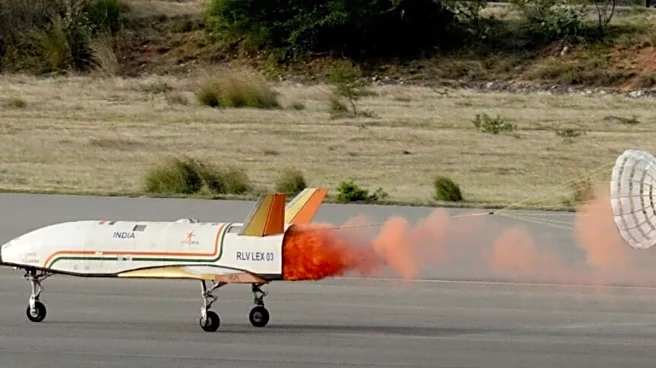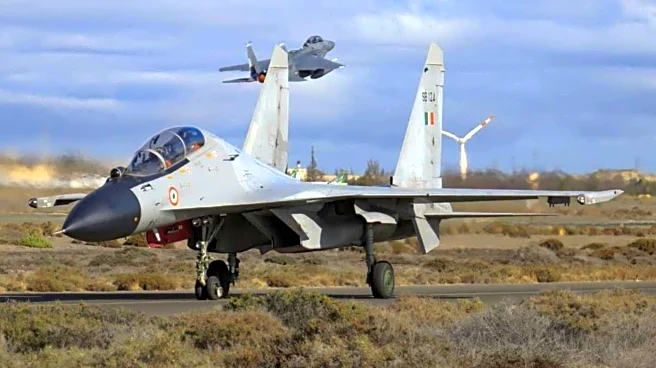As the global competition for space exploration intensifies, the focus is now shifting toward a revolutionary technology, reusable launch vehicles, also known as reusable rockets. Once a domain dominated solely by the United States through Elon Musk’s SpaceX, this innovation is drawing attention from nations like China and India, which are fast catching up.
China recently sent three astronauts to its space station and is now preparing to launch its first reusable rocket. The breakthrough could drastically reduce the cost and complexity of space missions, marking a major step in the country’s expanding space ambitions.
Reusable rockets are designed to return to Earth intact, allowing their costly components to be flown again, similar to how an
aircraft operates. While this concept sounds simple, in practice, it involves formidable engineering challenges. “Building a single-use rocket is already hard; preparing it for re-entry and recovery adds an entirely new level of complexity,” explained Srinath Ravichandran, co-founder and CEO of Agnikul Cosmos, during the International Astronautical Congress held in Australia in September this year. He added that ISRO has been actively guiding Indian private players in developing this capability.
A typical reusable rocket consists of two stages. The first, which is the most expensive, provides the initial thrust to reach orbit. The second then carries the satellite, spacecraft, or astronauts to their intended destination. It is the first stage that engineers aim to recover.
Roughly two to three minutes after launch, at altitudes between 65-80 kms, the booster detaches. Earlier, this portion would fall into the sea and be discarded. Now, with advanced navigation and thruster systems, it flips around mid-air and begins its controlled return at speeds nearing 5,000 kms per hour.
Before touchdown, engines fire again briefly to slow the descent, a process known as “braking burn”. During landing, carbon-fibre legs unfold, and parachutes help cushion the impact, ensuring a soft recovery.
The United States remains the only nation to have mastered this feat so far. SpaceX’s Falcon 9 became the world’s first successful reusable rocket in 2015, when it deployed 11 satellites into orbit and then safely landed back on Earth. Since then, SpaceX has reused some boosters up to 31 times and achieved over 350 successful landings, cutting mission costs by nearly half.
China, India, and several other countries are now racing to replicate that success. Chinese companies such as Landspace, iSpace, and Galactic Energy have conducted suborbital tests up to 10 kms, with their first orbital recovery expected by 2026.
India, meanwhile, has been working steadily toward the same goal. ISRO began developing reusable launch vehicle (RLV) technology in 2010, employing a team of more than 750 engineers. The first test, the Hypersonic Flight Experiment, took place in 2016 and ended with a successful landing in the Bay of Bengal.
More recently, ISRO tested Pushpak, a prototype that was dropped from a Chinook helicopter at an altitude of 4.5 kms and autonomously landed at the Aeronautical Test Range in Chitradurga, Karnataka. The agency’s next-generation launch vehicle, which could include a fully reusable system, is slated for its first flight around 2033.
Private players are also pushing boundaries. Agnikul Cosmos has launched its Agnibaan rocket, which reached 20 kms in altitude before landing in the Bay of Bengal. The company aims to make 70% of the rocket reusable by late 2025 or early 2026. Skyroot Aerospace, another Hyderabad-based startup, launched Vikram-1 in 2022 and plans to begin regular reusable rocket launches by 2026, targeting one flight every three months.
Elsewhere, Europe’s ArianeGroup and Isar Aerospace have begun engine and small flight tests, though orbital re-entry remains distant. Japan, working with Honda, has managed flights up to 300 metres and aims for higher tests in 2025, while Russia’s Roscosmos is developing the Amur reusable rocket, expected no earlier than 2030.


/images/ppid_59c68470-image-176284019220147028.webp)


/images/ppid_59c68470-image-176282507540422263.webp)

/images/ppid_a911dc6a-image-17627848377601450.webp)




/images/ppid_59c68470-image-176266254837956366.webp)

/images/ppid_59c68470-image-176277503374724521.webp)
